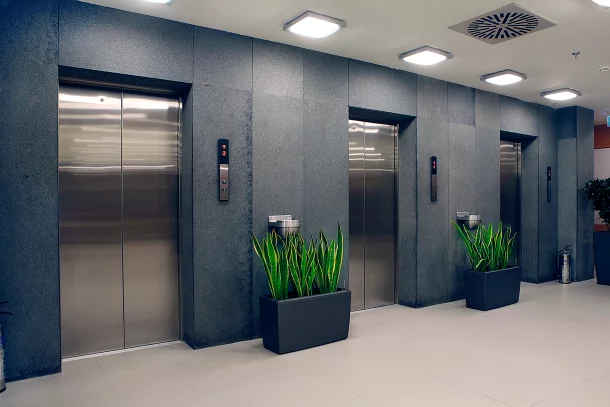Exploring the Globe of Lifts: Common Issues Encountered by Numerous Lift Systems
As we browse with the upright transportation systems of modern structures, lifts stick out as an indispensable part of our everyday lives. However, behind their seamless operation lies a world of detailed systems that can often experience difficulties. From hydraulic lifts to grip systems and machine-room-less styles, each lift kind features its set of typical concerns. Understanding these challenges is crucial for making certain the smooth performance of these important systems. Allow's discover the intricacies that underlie the procedure of lifts and the potential issues that can emerge, shedding light on the complex web of lift mechanisms.
Hydraulic Elevators
Hydraulic lifts, usually preferred for low-rise buildings, utilize fluid stress to manage the activity of the lift auto (lift repair companies). This system entails a hydraulic pump pressing oil into a cyndrical tube, causing the lift to move in the wanted instructions. While hydraulic lifts are recognized for their smooth and silent procedure, they do include their very own set of typical issues
One common trouble with hydraulic elevators is oil leakage. In addition, problems with the control system, such as defective valves or a malfunctioning pump, can cause interruptions in the lift's motion.
Normal maintenance and prompt repairs are vital to ensure the smooth performance of hydraulic elevators. By resolving these common concerns proactively, building owners can lessen downtime and make certain the security and performance of their upright transportation system.
Grip Lifts
When taking into consideration upright transportation systems in structures, an additional typical kind besides hydraulic elevators is the traction elevator. Traction lifts run utilizing a system of ropes and weights that move the elevator vehicle by gripping onto the hoist ropes. This mechanism permits smoother and quicker vertical transportation compared to hydraulic systems.
Among the typical issues faced by traction lifts is rope wear. The constant movement of the ropes within the traction system can result in damage gradually, possibly creating the elevator to breakdown or come to be dangerous for use. Regular evaluations and maintenance of the ropes are vital to guarantee the elevator's appropriate performance and security.
One more problem that grip lifts might come across is connected to the control system. Issues with the control system can cause problems such as irregular activity, hold-ups in feedback times, or perhaps total closures. Regular screening and maintenance of the control system are vital to stop such issues and guarantee the lift's reliability.
Machine-Room-Less (MRL) Lifts

Among the vital components of MRL lifts is the portable gearless grip equipment that is set up within the hoistway. This device successfully drives the lift auto without the need for cumbersome devices discovered in standard traction lifts. Additionally, MRL lifts typically use a weight system to balance the automobile, more enhancing their power efficiency.
Regardless of their benefits, MRL lifts might deal with obstacles connected to repair and maintenance because of the confined room for devices installation. Availability for servicing components london lift company within the shaft can be limited, requiring specialized training for specialists. Proper upkeep schedules and normal inspections are vital to guarantee the continued smooth operation of MRL lifts.
Overloading and Weight Limitation Issues
Overwhelming and weight limit issues are essential issues in lift operations. Lift suppliers design raises with particular weight capacities to make certain guest safety and tools longevity.
When elevators are overloaded, it puts excessive pressure on the electric motor, wires, and various other parts, possibly causing malfunctions or breakdowns. If they spot excess weight, security mechanisms such as sensors and overload sensing units are in location to protect against elevators from relocating. Furthermore, going beyond weight restrictions can result in increased energy consumption and deterioration on the elevator system.
To mitigate overloading concerns, building supervisors need to plainly present weight limitations in elevators and enlighten residents on the relevance of adhering to these limitations - lift repair companies. Normal upkeep checks by certified professionals can additionally assist ensure that lifts are running within secure weight parameters. By resolving overloading and weight restriction concerns proactively, building proprietors can enhance elevator security and efficiency
Electrical System Failings
Surpassing weight restrictions in elevators can not just lead to mechanical concerns however additionally potentially add to electric system failures within the lift infrastructure. Electric system failings are a crucial worry in elevator procedure, as they can cause unanticipated shutdowns, malfunctions, or even security hazards.
Furthermore, power rises or changes in the electrical supply can also interfere with the elevator's operation, influencing its efficiency and security. These electrical disruptions can harm sensitive elevator elements such as control board, circuit boards, or sensing units, bring about system failures. Routine maintenance and assessments are vital to determine and resolve possible electrical issues quickly, guaranteeing the secure and effective procedure of elevator systems. By sticking to weight restrictions and performing regular electrical system checks, structure owners can mitigate the threat of electric failures in lifts.
Verdict

Hydraulic lifts, usually liked for low-rise buildings, use we maintain lifts fluid pressure to control the movement of the elevator automobile.When thinking about vertical transport systems in structures, another common type apart from hydraulic lifts is the traction lift. Traction lifts run utilizing a system of ropes and counterweights that move the elevator vehicle by grasping onto the hoist ropes. Unlike standard lifts that require a separate equipment area to house the devices, MRL lifts incorporate many of the parts within the shaft, removing the requirement for a specialized equipment area.In final thought, lifts face typical problems such as hydraulic malfunctions, grip system failings, and electrical system problems.